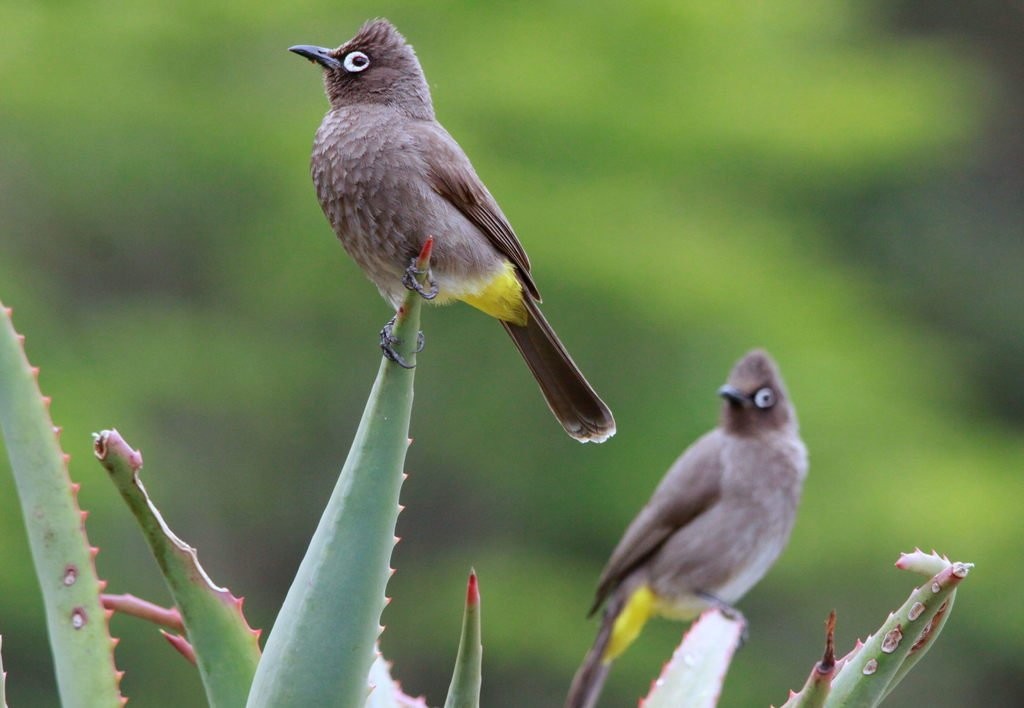Cape Bulbul
A species of Typical Bulbuls Scientific name : Pycnonotus capensis Genus : Typical Bulbuls
Cape Bulbul, A species of Typical Bulbuls
Botanical name: Pycnonotus capensis
Genus: Typical Bulbuls
Content
Description General Info
Description
The Cape bulbul is 19–21 cm (7.5–8.3 in) long, mainly dull, blackish brown with a diagnostic white eye-ring, and yellow undertail coverts. The head has a small crest. The short, straight bill, legs and feet are black and the iris is dark brown. The sexes are similar in plumage. This species is much darker than the other South African bulbuls, and differs in the eye ring colour and brown lower belly, whereas the other dark bulbuls have a pale lower belly. The dark belly helps to identify juveniles, which lack the distinctive eye ring of the adult. The most typical call of this species is a liquid whistle of two or more varied notes pit-peet-pitmajol, piet-piet-patata. 
Size
21 cm
Nest Placement
Shrub
Feeding Habits
Cape Bulbul primarily consumes fruits from various plants, seeds, nectar, and arthropods, with vegetation comprising about 90% of its diet. Nestlings initially eat mostly arthropods, shifting later to fruit. Cape Bulbul forages alone or in small flocks, often taking insects mid-flight or from flowers, and regularly drinks water.
Habitat
The habitat of cape Bulbul typically includes shrubby areas such as fynbos, coastal scrub, dune forests, riverine brush, and gardens, with a preference for areas like Acacia woodlands. These birds thrive in environments that receive winter or all-year-round rainfall and are generally found in regions that offer moist conditions. Cape Bulbul's distribution is associated with broader geographical areas that encompass winter or year-round precipitation.
Dite type
Omnivorous
General Info
Feeding Habits
Bird food type
Behavior
The Cape bulbul is a common and conspicuous bird, which tends to perch at the top of a bush. It is active and noisy, usually seen in pairs or small groups foraging for fruit, nectar and insects. In part of its range, it gets parasitized by the Jacobin cuckoo. 
Species Status
Not globally threatened.
Scientific Classification
Phylum
Chordates Class
Birds Order
Perching birds Family
Bulbuls Genus
Typical Bulbuls Species
Cape Bulbul 